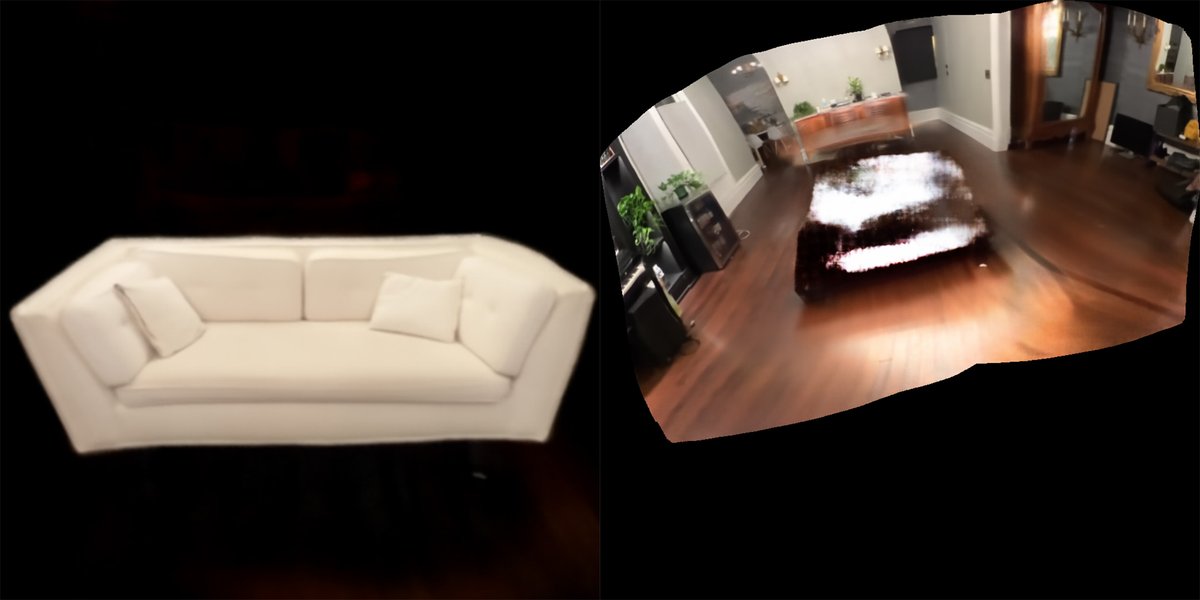I wanted to imagine how we’d better use #stablediffusion for video content / AR.
A major obstacle, why most videos are so flickery, is lack of temporal & viewing angle consistency, so I experimented with an approach to fix this
See 🧵 for process & examples
A major obstacle, why most videos are so flickery, is lack of temporal & viewing angle consistency, so I experimented with an approach to fix this
See 🧵 for process & examples
Ideally you want to learn a single representation of an object across time or different viewing directions to perform a *single* #img2img generation on.
For this I used layered-neural-atlases.github.io (2021)
For this I used layered-neural-atlases.github.io (2021)
This learns an "atlas" to represent an object and its background across the video.
Regularization losses during training help preserve the original shape, with a result that resembles a usable slightly "unwrapped" version of the object
Regularization losses during training help preserve the original shape, with a result that resembles a usable slightly "unwrapped" version of the object

The authors of the paper recommend using Mask R-CNN for creating a segmentation mask before training, but for this I found it easier (and cleaner) to just create a mask with the Rotobrush in After Effects
Once the "atlas" was learned I could then run it through #depth2img, then use the new atlas to reproject across the video.
This last remapping part is quick so you could imagine it being rendered live based on your viewing angle for #AR (for a pre-generated scene)
This last remapping part is quick so you could imagine it being rendered live based on your viewing angle for #AR (for a pre-generated scene)
Here are some more out there takes, including turning my couch into a jumping castle! 🏰🎈
There are endless possibilities here for content creation. Follow for more creative AI experiments!
There are endless possibilities here for content creation. Follow for more creative AI experiments!
• • •
Missing some Tweet in this thread? You can try to
force a refresh










